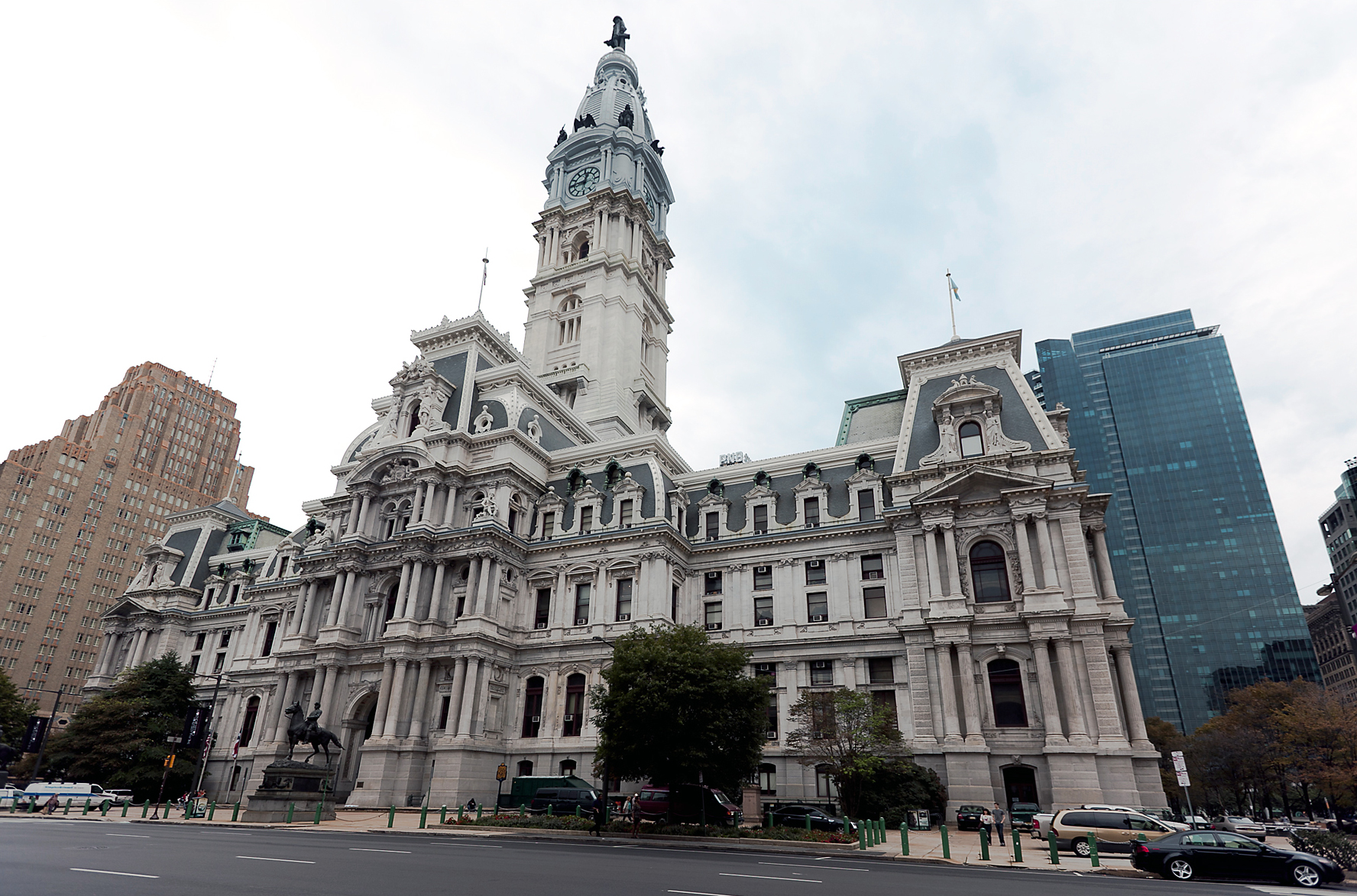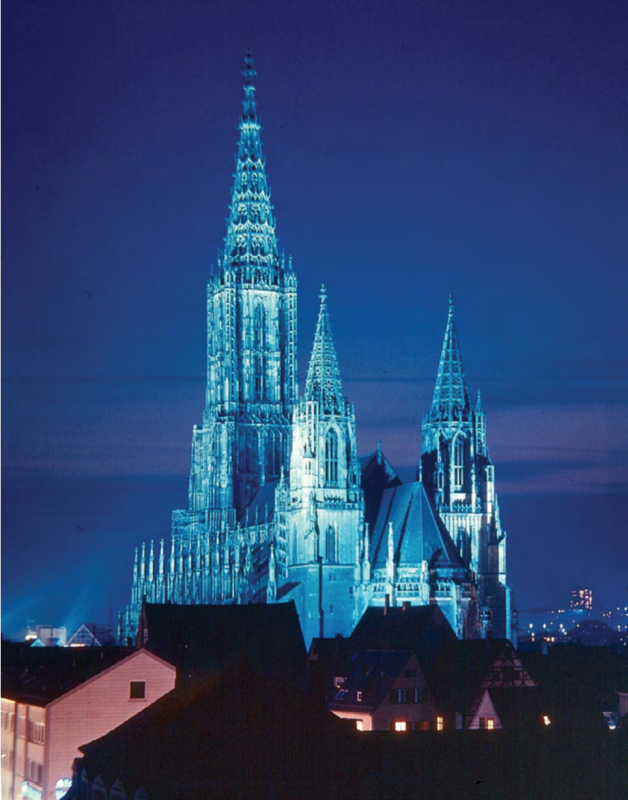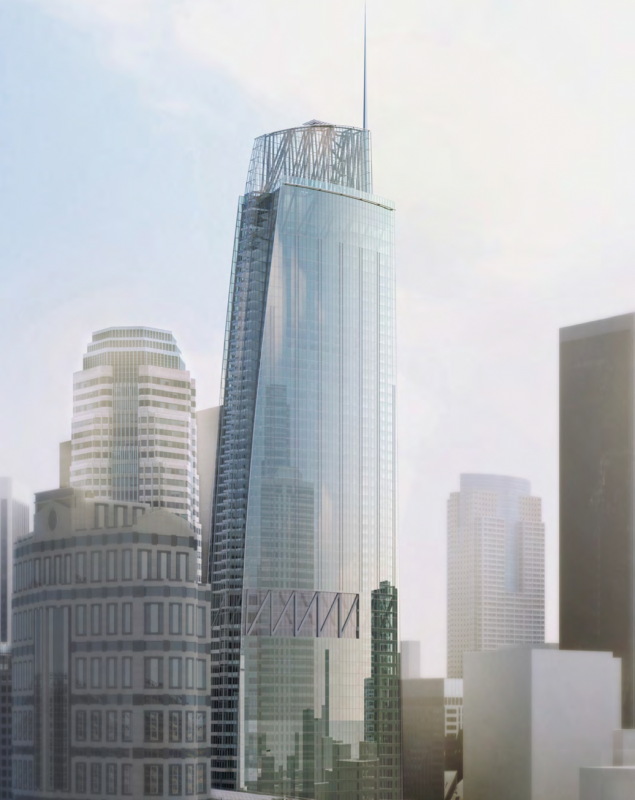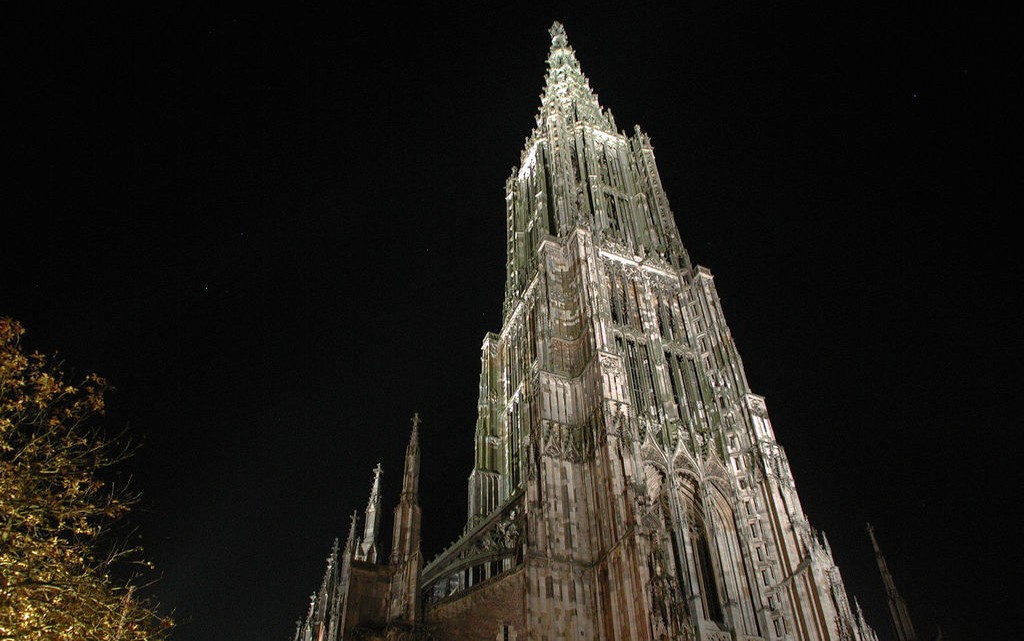For most of recorded human history, the tallest buildings in the world have been religious: the physical manifestations of power and magic. Constructed to be visible at the greatest of distances, cathedrals loom large in our minds. Their spires reach upwards to the heavens, and their sermons down into our souls. At times, cathedrals were even designed for a god’s eye perspective.
For much of recorded Western history, power has been inextricably tied to the church. While kings controlled mighty keeps and large armaments, they bowed to the bishops and monks. The church had a power over the masses the kings couldn’t wield—a divine authority. This power was more metaphysical, even as they spent much of their wealth and hundreds of years building cathedrals to impose that power. Monarchs and priests became conduits of divine power that were meant to impose, both physically and emotionally, on every one of their subjects.
After centuries of rule in the Western world, religious icons were replaced by industrial power, by capitalism. Soaring over global financial centers, skyscrapers impressed upon us the power of money, reaching farther into the heavens than any cathedral ever had, even while often borrowing styles of their religious predecessors. In 1901, standing at a breathtaking 584 feet, Philadelphia City Hall became the tallest building in the world—and the first to soar above a religious spire—surpassing the previous record holder, the Ulm Minster cathedral in Ulm, Germany by 54 feet.

Philadelphia City Hall in Philadelphia, PA. Tallest building in the world from 1901 to 1908. Courtesy of the Internet.

Ulm Minster in Ulm, Germany. Tallest building in the world from 1890 to 1901. Courtesy of the Internet.
Philadelphia City Hall quickly lost that title in an American-led race to the highest, reaching its pinnacle with the 1973 construction of the Sears Tower in Chicago at 1,451 feet tall. By the 1970s, the gods of the West had shifted from religious fervor to economic prowess, a statement that was reflected in the shift away from decadent architectural flourishes to the matte finish of steel and glass. The United States was the irrefutable king of capitalism, holding the record for the tallest building in the world for just over 100 years.
Just as the cathedrals before, these skyscrapers drew us in. While cathedrals promised salvation and protection, the skyscrapers promised riches to those who danced in their walls, and destitution for those not able to make it inside. This symbol of American power was quickly replaced by even taller skyscrapers in other countries. The Sears Tower held the record until 1998 when Kuala Lumpur built the Petronas Towers. After that came Taipei 101 in Taipei in 2004, and then in 2010 the Burj Khalifa in Dubai was built at 2,717 feet tall. The Burj Khalifa remains the tallest building today. Following the money, these new mega-structures are popping up wherever newer markets have emerged, signifying the undeniable wealth and power of Asian markets whose leaders have adopted capitalism wholeheartedly.
Even if some of these countries still masquerade as communist, their skyscrapers show their true allegiances. Were the gods of capitalism no longer appeased by the West, or had the West something new to worship?
At the top of every skyscraper is a large antenna. As a boy this always surprised me. Didn’t the powerful want their office, their restaurant, or home to be the tallest point? Yet what had made all that wealth possible was the communication behind it, of which these antennas were vital.
The architecture of power of the 21st century has shifted from the cathedral, the castle, and the skyscraper to housing centers for the receipt and transmission of data. Now, this display of might has sunk into the land, into undersea cables, and into nondescript, heavily air-conditioned structures few could identify as anything meaningful to anyone. The crucial structures of the networks that allow for global commerce and communication (and surveillance) are hidden black tubes not even a foot in diameter, thoroughly unimpressive structures at the edges of oceans, and bland data centers in the middle of nowhere. There is no monumentality behind them.
It makes sense that the mighty lords of China have some of the tallest buildings today, but what about the saints of Facebook? With more users than any single country has citizens, where are its towers, its identifiable presence in the world? Where do I go to pray to the blue god of Facebook?
The king, the priest, and the Rockefeller have become the Google or the NSA. 60 Hudson Street in New York, formerly the headquarters of the wire transfer and money order company Western Union, is now home to over 100 telecommunications companies and an algorithmic trading device that can make trades faster than those of Wall Street. At 2.9 million square feet, 111 Eighth Avenue remains the fourth largest building in Manhattan and has been the east coast headquarters for Google since 2010. These colocation centers are housed in the gutted remnants of the old sacred halls of capitalism.
These online companies and organizations slide into networks that span the Earth and distribute themselves for maximum impact and minimum accountability. They spread or “distribute” their missionaries across the globe and slide in between every aspect of our daily lives, even our most intimate conversations. We welcome them there. As the skyscraper became a hollow metaphor Asia employed to surpass the West, neoliberal power was reconstituted into nearly invisible satellite streams and GPS transmitted to magical black screens we feel obligated to examine upon awakening. The old dream of kings and priests to have a little black leather Bible in every citizen’s pocket has been achieved, only as magical glass tablets, and companies like Airbnb and Uber get the money we were meant to pay in tithes and taxes.
I once unwittingly had drinks while lounging on a waterbed with friends on top of Los Angeles’s largest colocation center, the Wilshire Grand Tower. This is one of the holiest of sites of today’s neoliberal economy and I didn’t even know I had entered its sacred grounds. I wouldn’t know what rites to perform if I had. As someone who studies these things, I am constantly struck by just how mundane these buildings are. The campuses of Google and Facebook are shiny happy playgrounds for tech wizards, with more money than they know what to do with and more power than they’ll ever admit. The banality of power today belies the extent that it reaches.

Wilshire Grand Center in Los Angeles, CA. Currently under construction, foundation laid in 2014. Courtesy of the Internet.
From the tallest hotel in Battambang, Cambodia, where I live, I look down at cell towers towering over the flat farms and short buildings that dot the landscape all the way to the horizon. They’re much taller than the Buddhist wats and this new luxury hotel. While the hotel is a proud symbol to local capitalists of the times to come, the cell towers are in control here.
Even as much of the world comes online in the next decade, developing countries won’t get the infrastructures we rely on for our power. The roads, the hospitals, the schools, and the innumerable, now-invisible resources that are the bedrock on which soft power stands aren’t being built for the global South. The US and Facebook only want the next billion connected to their data hungry eyes, searching for more money to build more power, and “all military-age males who might be a threat to that power.” The prayer of today’s networked missionary priests is “connect, observe, categorize, and capitalize.”
In much of the world, cell towers are and will remain the tallest manmade structures around, creating connections between each other and, perhaps more importantly, with the US. They are the last converts and they must join. These tech companies will send holy silver balloons into the sky or fleets of magical unmanned planes to find each and every one, and connect them to us. This new power remains a Western power, even as it secretly moves through an international network. Though this outreach may appear to be obfuscated, it is still centralizing just as it was prior to the World Wide Web.
Conversely, the Abraj al-Bait, the third tallest building in the world, stands over the Kaaba in Mecca as a signal to the West that the Middle East’s power remains firmly tied to religion: that Islam is both a religious and economic force to be reckoned with. These superstructures are not for the West—non-Muslims aren’t even allowed to enter Mecca. The people who circle the Kaaba in prayer know where their taxes are due, or maybe more importantly, where they aren’t. Maybe this is why the sacred penta-union Five Eyes (Australia, Canada, New Zealand, United Kingdom, and United States) spend so much time watching them. Their idolatry doesn’t fit with the true cathedrals of today. They must fall in step; they must buy our goods and worship our gods.
But what if our Wi-Fi isn’t magic? What if we’re only connected to each other? What if the wisdom of the crowd is contingent on network affordances, which are determined by businessmen in conference rooms hoping for a raise, or by accidental remnants from coders who don’t really give a damn?



